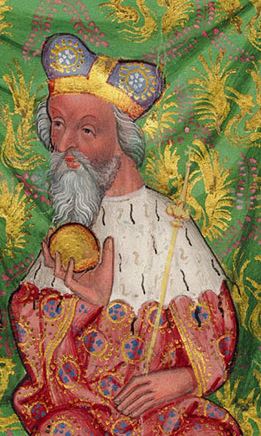
Jobst of Moravia, a member of the House of Luxembourg, was Margrave of Moravia from 1375, Duke of Luxembourg and Elector of Brandenburg from 1388 as well as elected King of Germany from 1410 until his death. Jobst was an ambitious and versatile ruler, who in the early 15th century dominated the ongoing struggles within the Luxembourg dynasty and around the German throne.
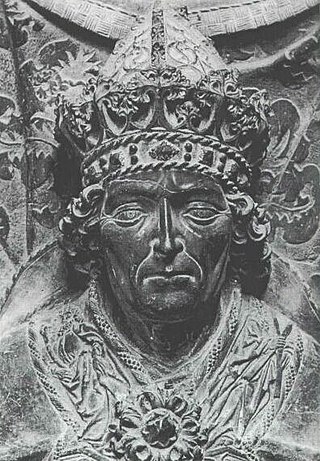
Louis IV, called the Bavarian, was King of the Romans from 1314, King of Italy from 1327, and Holy Roman Emperor from 1328 until his death in 1347.
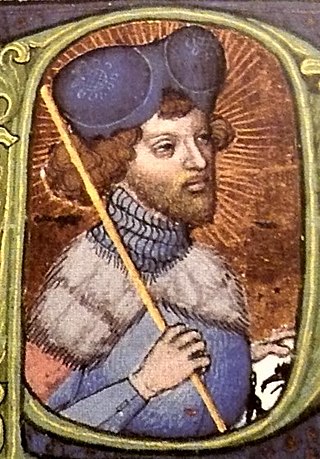
Wenceslaus IV, also known as Wenceslaus of Luxembourg, was King of Bohemia from 1378 until his death and King of Germany from 1376 until he was deposed in 1400. As he belonged to the House of Luxembourg, he was also Duke of Luxembourg from 1383 to 1388.

Rupert of the Palatinate, sometimes known as Robert of the Palatinate, a member of the House of Wittelsbach, was Elector Palatine from 1398 and King of Germany from 1400 until his death.

Sigismund of Luxembourg was a monarch as King of Hungary and Croatia from 1387, King of Germany from 1410, King of Bohemia from 1419, and Holy Roman Emperor from 1433 until his death in 1437, as well as prince-elector of Brandenburg. He was the last male member of the House of Luxembourg.

Frederick was the last Burgrave of Nuremberg from 1397 to 1427, Margrave of Brandenburg-Ansbach from 1398, Margrave of Brandenburg-Kulmbach from 1420, and Elector of Brandenburg from 1415 until his death. He became the first member of the House of Hohenzollern to rule the Margraviate of Brandenburg.
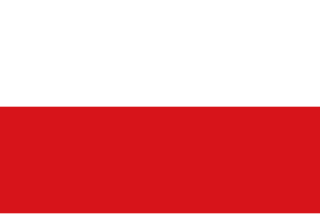
The Lands of the Bohemian Crown were the states in Central Europe during the medieval and early modern periods with feudal obligations to the Bohemian kings. The crown lands primarily consisted of the Kingdom of Bohemia, an electorate of the Holy Roman Empire according to the Golden Bull of 1356, the Margraviate of Moravia, the Duchies of Silesia, and the two Lusatias, known as the Margraviate of Upper Lusatia and the Margraviate of Lower Lusatia, as well as other territories throughout its history. This agglomeration of states nominally under the rule of the Bohemian kings was referred to simply as Bohemia. They are now sometimes referred to in scholarship as the Czech lands, a direct translation of the Czech abbreviated name.

The House of Luxembourg or Luxembourg dynasty was a royal family of the Holy Roman Empire in the Late Middle Ages, whose members between 1308 and 1437 ruled as kings of Germany and Holy Roman emperors as well as kings of Bohemia, Hungary and Croatia. Their rule was twice interrupted by the rival House of Wittelsbach. The family takes it name from its ancestral county of Luxembourg which they continued to hold.
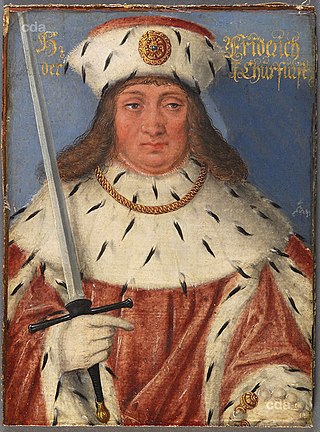
Frederick I, the Belligerent or the Warlike, a member of the House of Wettin, ruled as Margrave of Meissen from 1407 and Elector of Saxony from 1423 until his death.

The Margraviate of Brandenburg was a major principality of the Holy Roman Empire from 1157 to 1806 that played a pivotal role in the history of Germany and Central Europe.

The Duchy of Krnov or Duchy of Jägerndorf was one of the Duchies of Silesia, which in 1377 emerged from the Duchy of Troppau (Opava), itself a fief of the Bohemian Crown. Its capital was at Krnov in the present-day Czech Republic.
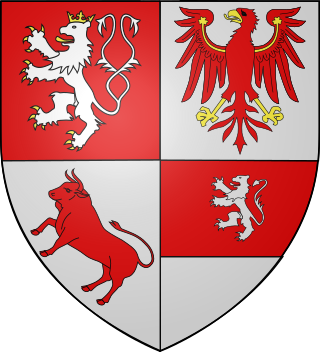
John of Görlitz was a member of the House of Luxembourg and the only Duke of Görlitz (Zgorzelec) from 1377 until his death.
The imperial election of 1376 was an imperial election held to select the emperor of the Holy Roman Empire. It took place in Frankfurt on 10 June.
The imperial election of 22 May 1400 was an imperial election held to select the emperor of the Holy Roman Empire. It took place in Frankfurt.

The imperial election of 21 August 1400 was an imperial election held to select the emperor of the Holy Roman Empire. It took place in Rhens.

King John's eldest son Charles IV was elected King of the Romans in 1346 and succeeded his father as King of Bohemia in the same year. Charles IV created the Bohemian Crown lands on the foundation of the original Czech lands ruled by the Přemyslid dynasty until 1306, together with the incorporated provinces in 1348. By linking the territories, the interconnection of crown lands thus no more belonged to a king or a dynasty but to the Bohemian monarchy itself, symbolically personalized by the Crown of Saint Wenceslas.

The 1257 imperial election was a double election in which the prince-electors of the Holy Roman Empire split into factions and elected two rivals, earl Richard of Cornwall and King Alfonso X of Castile, each claiming to have been legally elected.
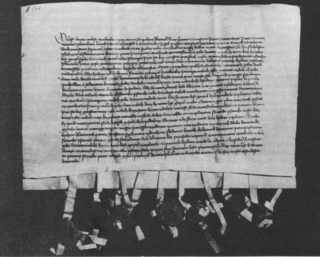
The Moravian Margrave Wars were a turbulent period of fighting, skirmishes, robbery and lawlessness that took place especially in Moravia at the turn of the 14th and 15th centuries.















